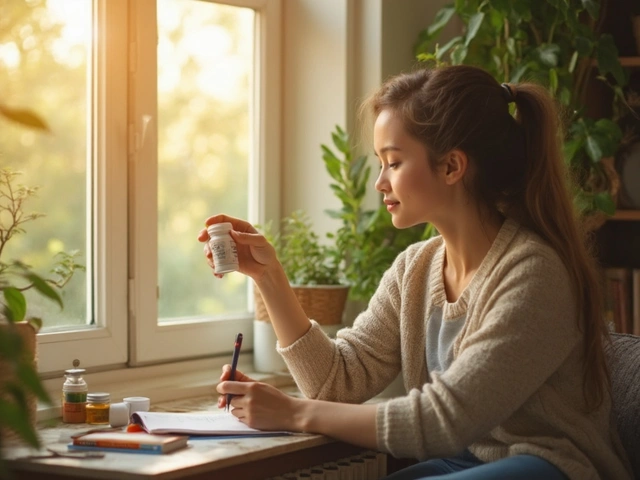Edema Explained: What It Is and How to Manage It
Ever notice your ankles puff up after a long flight or your hands feel tight after a salty meal? That’s edema – a buildup of fluid in the body’s tissues. It’s not just a cosmetic issue; persistent swelling can signal underlying health problems. This guide breaks down what causes edema, how to spot it early, and practical ways to bring the swelling down without a prescription.
Why Does Edema Occur?
Edema happens when fluid leaks from blood vessels into surrounding tissue. A few everyday triggers include:
- High sodium intake: Salt holds onto water, making extra fluid pool in your legs and face.
- Prolonged sitting or standing: Gravity pulls blood down, and if you don’t move, fluid can collect in your lower limbs.
- Medications: Some blood pressure pills, steroids, and hormones can cause your body to retain water.
- Health conditions: Heart failure, kidney disease, liver cirrhosis, and chronic venous insufficiency are common medical reasons for swelling.
When the liquid builds up, you might feel heaviness, see a shiny stretch on the skin, or notice a dent (pitting) after pressing the swollen area. If the swelling is sudden, painful, or accompanied by shortness of breath, call a doctor right away.
Practical Tips to Reduce Swelling
You don’t need a pharmacy to start easing edema. Try these simple steps:
- Cut back on salt: Aim for less than 2,300 mg a day. Fresh herbs, citrus, and pepper add flavor without the fluid‑locking effect.
- Stay moving: Take a short walk every hour, especially on long trips. Simple ankle pumps (flexing and pointing your feet) help push fluid back toward the heart.
- Elevate limbs: Raise your legs above heart level for 15‑20 minutes a few times daily. A pillow under your feet while you’re on the couch works well.
- Drink water: It sounds odd, but staying hydrated tells your body it doesn’t need to store extra water. Aim for 8 glasses a day unless your doctor says otherwise.
- Compression wear: Light‑weight stockings or sleeves apply gentle pressure, encouraging fluid to move upward.
- Watch medication side effects: If a new prescription coincides with swelling, talk to your doctor. They might adjust the dose or switch drugs.
For those with chronic conditions, doctors often recommend a low‑sodium diet, diuretics, and regular monitoring of weight. Keeping a daily log of your weight and swelling patterns can help your healthcare team fine‑tune treatment.
Remember, occasional puffiness after a salty dinner or a marathon isn’t a cause for panic. But if swelling sticks around, worsens, or shows up in unusual places like your abdomen, it’s time to seek professional advice. Early detection can keep a small fluid problem from turning into a bigger health issue.
Edema is a signal that your body’s fluid balance is off. By watching your diet, moving regularly, and using simple home tricks, you can often bring the swelling under control. Stay aware, stay active, and don’t hesitate to ask a doctor if something feels off.






